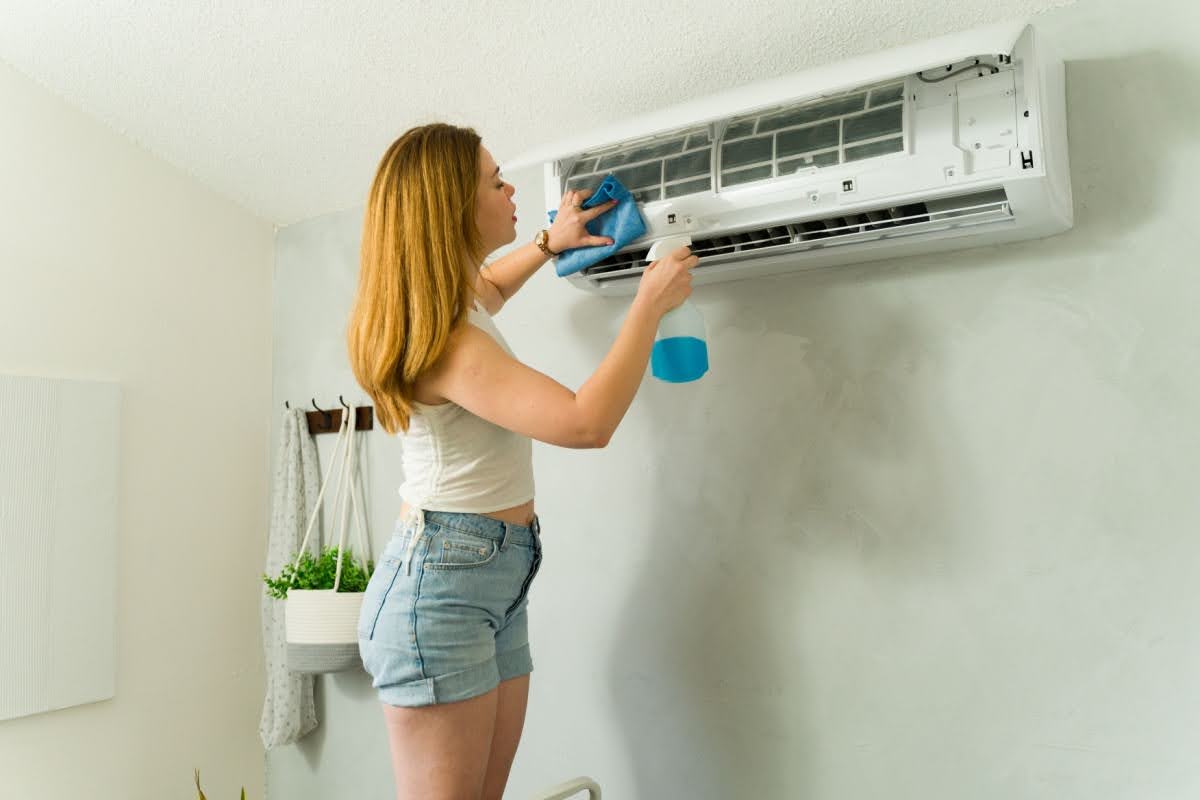June 4, 2025
Categories: Air Conditioning
That moment your air conditioning decides to pump out lukewarm air on a scorching day is incredibly frustrating. Your home should be a cool sanctuary, a place to escape the oppressive summer heat. When your air conditioning system falters, discomfort quickly sets in, turning your comfortable space into an unwelcome sauna.
We, your local experts at Martinov Home Solutions, LLC, understand this situation well, and we are here to guide you through some troubleshooting steps and help you determine when it’s time to call our crew for professional AC repair or AC replacement.
Common Reasons Why Your AC Isn’t Blowing Cold Air
Several things can cause warm air to come through your vents when you’re expecting cool relief. Some of these problems are small, while others point to deeper issues within the air conditioning system. Knowing the possibilities makes it easier to pinpoint where things are going wrong.
Here are some of the most common reasons your air conditioner might be blowing warm air:
- Low Refrigerant Levels: Refrigerant, often referred to as coolant, is the lifeblood of your air conditioning system, absorbing heat from within your home. A refrigerant leak will reduce the system’s ability to cool the air, meaning you’ll feel warmer air coming through your vents.
- Dirty or Clogged Air Filter: A blocked air filter severely restricts airflow to the air handler.
- Thermostat Malfunctions: Sometimes, the problem lies with the control center — your thermostat. Incorrect settings, dead batteries, or faulty wiring can prevent your air conditioning from receiving the command to cool or maintain the desired temperature.
- Frozen Evaporator Coil: Restricted airflow due to a dirty filter or a problem with the blower motor can cause the evaporator coil inside the air handler to get too cold and accumulate ice. This ice buildup acts as an insulator, preventing the coil from cooling the air.
- Dirty Condenser Coils: The outdoor unit, which houses the condenser coil and compressor, needs to release the heat removed from your home. If the condenser coil is caked in dirt, leaves, or other debris, it cannot expel heat properly, hindering the cooling process.
- Compressor Problems: The compressor is a vital component, essentially the heart of your air conditioning system, responsible for circulating refrigerant. A failing or damaged compressor is a significant issue that will stop the cooling process.
- Ductwork Issues: Leaks, blockages, or poor insulation in your home’s duct system can mean the cold air produced by your air conditioner never fully reaches your living spaces.
- Blower Motor Failure: The blower motor in your air handler is responsible for pushing air through the ductwork and into your rooms. A malfunctioning motor means insufficient airflow, even if the air conditioning unit is producing cold air.
Start with These Simple Troubleshooting Steps
If your air conditioning isn’t working the way it should, some basic steps might reveal the problem. A few minutes of inspection could save you a lot of stress and possibly a service call. These are the first things we recommend homeowners check before calling for air conditioning repair.
Check Your Thermostat Settings
Ensure the thermostat is set to “cool” and the desired temperature is lower than the current room temperature. If it’s a programmable thermostat, confirm the schedule is correct and an override isn’t preventing cooling. For battery-operated models, try replacing the batteries, as low power can cause erratic behavior or prevent the thermostat from signaling the air conditioning unit. After adjusting settings, wait a few minutes to see if the air conditioning kicks on and starts producing cold air.
Inspect and Replace the Filter
A clogged air filter can restrict airflow, forcing your air conditioning system to work harder while cooling less effectively. If the filter looks dark or blocks light when held up, it’s time to swap it out. Regular replacements — typically every one to three months — can help maintain steady airflow, support the air handler, and prevent ice from forming on the coils.
Examine Air Vents and Return Grilles
Walk through your home and visually inspect all supply vents and return air grilles. Make sure they are open and not blocked by furniture, curtains, rugs, or other household items. Sometimes, vents in unused rooms get closed and forgotten, which can unbalance the system’s airflow. Clearing any obstructions allows the conditioned air to circulate as intended, improving the overall temperature regulation in your living spaces and helping your air conditioning system operate properly.
Look at the Outdoor Unit
Inspect the area around your outdoor unit. Remove any leaves, grass clippings, weeds, or other debris that may have accumulated against or around the unit; a clearance of at least two to three feet on all sides and above is usually recommended. Trim back any encroaching shrubs, bushes, or overhanging branches. Ensuring unobstructed airflow to the outdoor unit helps it dissipate heat effectively, which is fundamental for the air conditioning process and can prevent premature wear and tear on the compressor.
When to Call for Professional Air Conditioning Repair
If the basic steps don’t solve the problem, or if you notice signs that point to a deeper issue, it’s time to bring in a licensed technician. A professional can inspect the air conditioning system, diagnose the cause, and repair the damage.
Keep an eye out for the following signs:
- Warm air despite correct thermostat settings
- Strange or loud noise from the compressor or air handler
- Noticeable odor from the vents or outdoor unit
- Visible ice buildup on the refrigerant lines or coils
- Leaking water or refrigerant near the indoor or outdoor unit
- Inconsistent temperature in different rooms
- Poor airflow even after filter replacement
- Unusually high energy bills
- Frequent short cycling or system shut-offs
- Previous DIY fixes that haven’t worked
Your comfort and safety matter. If you suspect a refrigerant leak or electrical fault, avoid handling it yourself. Some air conditioning repairs require specific tools, experience, and certification to complete properly and safely.
AC Not Blowing Cold Air? Martinov Home Solutions Can Help!
Martinov Home Solutions, LLC is proud to serve local homeowners with dependable air conditioning repair and honest service. When your system stops cooling, we’re here to help figure out what’s wrong, fix it fast, and get your home back to a comfortable temperature.
We don’t rush diagnoses or push unnecessary services. Our technicians take the time to inspect the full system — thermostat, ductwork, compressor, and all. Whether the issue involves a leak, coolant recharge, heat pump failure, or airflow problem, we come prepared to restore your cooling power with repair or replacement, as needed.
If you’re facing an emergency service situation, we’re just a call away. You’ll speak with real people who understand how stressful it feels when the AC fails. Our team takes wear and tear seriously, and we’ll help you prevent the same problem from returning. We believe in clear communication, smart repairs, and cooling systems that make your home feel good again.

